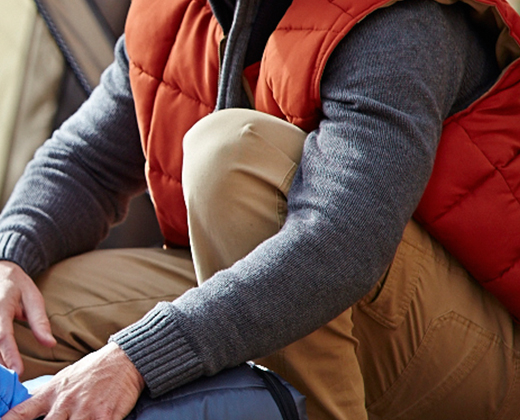How to Buy Hiking Boots
Whether you’re walking a local footpath or trekking the Appalachian Trail, you need a hiking boot that delivers a blend of comfort, protection and traction. Learn more about choosing the right hiking boots, materials and features.
June 25, 2015

TYPES OF HIKING BOOTS
- Light hiking boots are great for novice or intermediate hikers. Think outdoors enthusiasts who go on one- or two-day hikes with a lightweight backpack and only essential supplies. These boots are lightweight and flexible and offer ideal breathability.
- Technical hiking boots are geared towards the more experienced hiker, such as those who journey on multi-day hiking trips. These hikers might venture out on technical terrain with a heavier or frame hiking backpack. These boots are ultra-durable and waterproof with traction-maximizing outsoles.
HIKING BOOT FEATURES
Upper
- A full-grain leather upper is supportive, durable and waterproof.
- A suede upper (sometimes combined with mesh fabric) offers more flexibility and breathability, but is not as supportive as full-grain leather, nor does it offer waterproofness.
- A one-piece upper is often more durable than those with multiple seams, but offers less breathability.
Midsole
- The midsole helps to disperse weight and provide stability. This component can be made of multiple materials.
- Compression EVA midsoles are ultra-lightweight.
- Injection-molded EVA midsoles are made of melted EVA pellets. They have a more consistent density from heel to toe.
- Polyurethane, or PU, midsoles are lightweight with excellent cushion, shock absorption and flexibility.
- TPR (Thermoplastic Rubber, a combination of petroleum-based chemicals) midsoles offer lightweight durability and flexibility.
Outsole
- Outsoles are generally constructed of rubber and offer traction when hiking over a variety of surfaces.
- Lugs or treads help boost traction, but the deeper they are, the heavier the outsole and overall boot will be.
Extra Boot Features
- GORE-TEX® linings provide waterproofing and breathability.
- Shanks offer stability and support and are generally located in the midsole.
- Gusseted tongues help to keep out water, stones and debris.
- Removable footbeds or insoles help provide comfort, cushioning and additional support.
- Padded collars offer a comfortable, supportive fit.
Waterproofing
- Before waterproofing, make sure your hiking boots are clean and free from dirt and debris.
- The best waterproofing substance for leather boots is a water-based or fluoropolymer waterproofing product. This can be used on previously treated leather. It dries quickly and removes stains.
- Make sure to concentrate on seams, which can degrade over time and let water seep in.
- For GORE-TEX® lined boots, it's best to use a silicone-based waterproofing substance to allow for more breathability.
- Waterproofing solutions are available for a number of types of other footwear as well.
Searching for the right size? Look for the True Fit icon on apparel and footwear product pages when shopping online at DICK’S Sporting Goods. Get personalized size and fit recommendations with just a few clicks. Learn more about True Fit.








